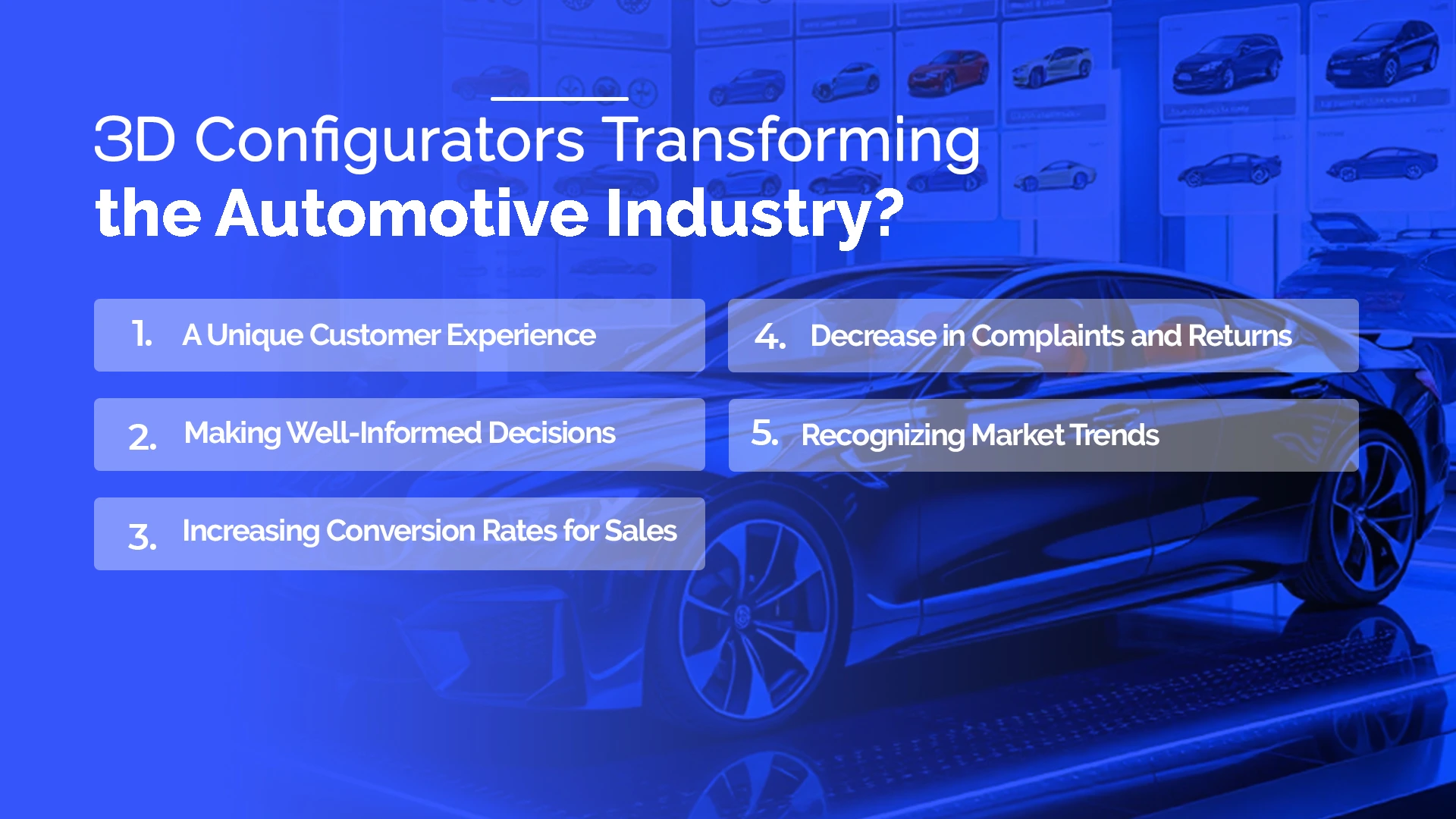Currently, the matured business world has acknowledged that there is no turning back and one of the vital components of any organization that concerns the future of customers will remain different in the automobile industry is the digital transformation. The 3d car configurator is emerging as a radical solution that integrates the best of both traditional and modern approaches to car sales. This platform is interactive, enabling target audiences to see and design cars, hence giving them the ability to create their perfect car on the computer.
There is a great debate about the core features of a car 3d configurator that sets it apart from others. What are the prospects of this tool for the world automotive brands and how are they planning to leverage this tool? First, let’s explore the basics.
What is a 3D Car Configurator?
A 3d car configurator is a digital technology that aims to improve the car purchase process. It allows the audience to change, personalize, and inquire into a car’s features, like its shading, or all the details inside the car. Such a tool is available in a high degree of interactivity, including real-time visual rendering of a vehicle selected for assembly as options are chosen by the client.
Changes made unknowingly by the user, for example changing the rim to an alloy one or changing the cabin seat’s material cover will easily show in the 3D modeling environment
Users can control the model and move it on different axes, click on different places into the model, or even move it from day to night mode
Using cutting-edge technology, sophisticated configurators automatically combine the price and availability of options for dealerships and make it hassle-free.
For car lovers who have an amazing chance to play with a 3D configuration, they can freely change shapes and styles. For the companies, it is a device for enticing customers, showing alternatives, and attempting to survive in the business storm.

Why are 3D Configurators Transforming the Automotive Industry?

- A Unique Customer Experience: Unlike the traditional car-buying process, which often involves visiting dealerships and flipping through brochures, configurators empower buyers to take control. The ability to see a 3d configurator car transformed in real-time fosters excitement and builds a deeper emotional connection.
- Making Well-Informed Decisions: Because 3D car customization software offers real-time pricing and rich images, it encourages openness. There is no longer need for verbal descriptions or still photos because buyers can quickly evaluate various trims and combinations.
- Increasing Conversion Rates for Sales: Higher conversion rates are frequently the result of an interesting, engaged buying experience. When customers believe they have customized the product to fit their tastes, they are more likely to buy it.
- Decrease in Complaints and Returns: Customers are less likely to be disappointed when they know exactly what they’re buying, which lowers post-purchase discontent and lowers the possibility of returns.
- Recognizing Market Trends: Manufacturers can learn a great deal about the preferences of their customers by examining data from 3D configurator interactions. This information aids in forecasting future demand and improving product offerings.
Types of Car Configurators
Car configurator 3d software isn’t one-size-fits-all. Depending on the level of sophistication and features offered, they can be categorized as follows:
Basic Configurators
- Offer simple, 2D customization options.
- Limited in scope, typically used for quick visual representation.
Example: Early online car customization tools.
3D Configurators
- Allow users to view their customized car in three dimensions.
- Enable rotation, zoom, and a realistic view of modifications.
Example: Most modern car configurators fall into this category.
Augmented Reality (AR) Configurators
- Enable users to place a virtual model of their car in their environment using smartphone or tablet.
Example: AR tools used by brands like Toyota and Mercedes Benz.
Virtual Reality (VR) Configurators
- Provide an immersive experience, allowing users to virtually “sit” in the car or take a tour.
- Popular in high-end showrooms for luxury brands.
How Automotive Leaders Create Custom Car Configurators?
Developing a 3d car configurator online involves significant investment and expertise. Leading brands follow a structured approach to ensure their tools meet customer expectations and business goals.
- Define the Scope: Curating the end result is critical before stating the process. Asking questions like Is the configurator aimed at increasing online sales? Enhancing dealership experiences? Clarify the intent of the client and ensure the platform’s features align with its purpose.
- Invest in Visual Quality: High-quality renders are essential for a realistic feel. Factors like lighting, reflections, and textures need careful attention.
- Focus on User Experience: A clunky interface can drive users away. Top configurators are intuitive, fast, and designed for seamless navigation.
- Enable Real Time Performance: Customers expect changes to update instantly without lag. Optimized coding and efficient rendering engines are critical here.
- Implement Advanced Features: Features like AR, VR, and AI-based recommendations make the configurator stand out, providing users with an experience they won’t forget.
- Partner with Experts: From 3D modeling to integration with existing systems, the process requires technical prowess. Collaborating with specialists ensures high-quality results.
Popular 3d Car Configurators Online
Several brands have set benchmarks with their configurators. Let’s explore some noteworthy examples:
- Tesla Design Studio: Known for its clean design and simplicity, Tesla’s configurator focuses on efficiency. It allows users to choose trims, colors, and wheels while instantly reflecting costs.
- Porsche Car Configurator: Porsche’s configurator goes deep into customization, letting buyers specify details like seat stitching and personalized nameplates.
- Audi Configurator: Audi combines visual appeal with ease of use, offering customization options for both exterior and interior components.
- Ferrari Configurator: Aimed at luxury buyers, Ferrari’s tool incorporates immersive visuals and an extensive range of personalization options.
How Spyne Can Assist Automotive Brands?
Spyne specializes in creating high-performance digital tools tailored for the automotive sector. Their expertise lies in enhancing customer experiences through:
- Realistic Visuals: Spyne’s AI-driven technology ensures detailed and accurate 3D models.
- Custom Features: Configurators are tailored to reflect each brand’s identity and meet specific requirements.
- Affordability: By optimizing workflows, Spyne delivers quality solutions at competitive costs.
- Advanced Capabilities: From AR to VR integrations, Spyne stays at the forefront of innovation.
With Spyne’s help, automotive brands would improve their ability to integrate a configurator so that technologically advanced buyers can be snatched up, and market share increased.
Conclusion
The advancement of the 3d car configurator is a game-changing development in the way customers engage with automotive brands. It goes beyond mere personalization; it is about making the customer experience more interesting and the buyer more empowered.
In utilizing solutions such as what Spyne provides, brands can come up with configurators that are effective in form, easier to use than their competitors, and appealing to the eye thus enhancing sales and meeting customer satisfaction.



























